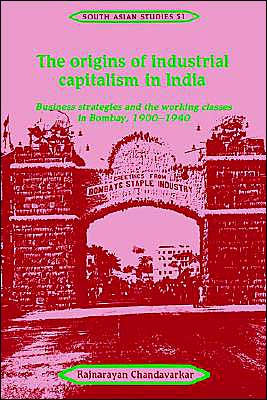5
1
9780521525954



The Origins of Industrial Capitalism in India: Business Strategies and the Working Classes in Bombay, 1900-1940 available in Hardcover, Paperback

The Origins of Industrial Capitalism in India: Business Strategies and the Working Classes in Bombay, 1900-1940
- ISBN-10:
- 0521525950
- ISBN-13:
- 9780521525954
- Pub. Date:
- 10/30/2003
- Publisher:
- Cambridge University Press
- ISBN-10:
- 0521525950
- ISBN-13:
- 9780521525954
- Pub. Date:
- 10/30/2003
- Publisher:
- Cambridge University Press

The Origins of Industrial Capitalism in India: Business Strategies and the Working Classes in Bombay, 1900-1940
$39.99
39.99
In Stock

Product Details
| ISBN-13: | 9780521525954 |
|---|---|
| Publisher: | Cambridge University Press |
| Publication date: | 10/30/2003 |
| Series: | Cambridge South Asian Studies , #51 |
| Edition description: | Revised ed. |
| Pages: | 492 |
| Sales rank: | 960,534 |
| Product dimensions: | 6.30(w) x 9.25(h) x 1.30(d) |
From the B&N Reads Blog
